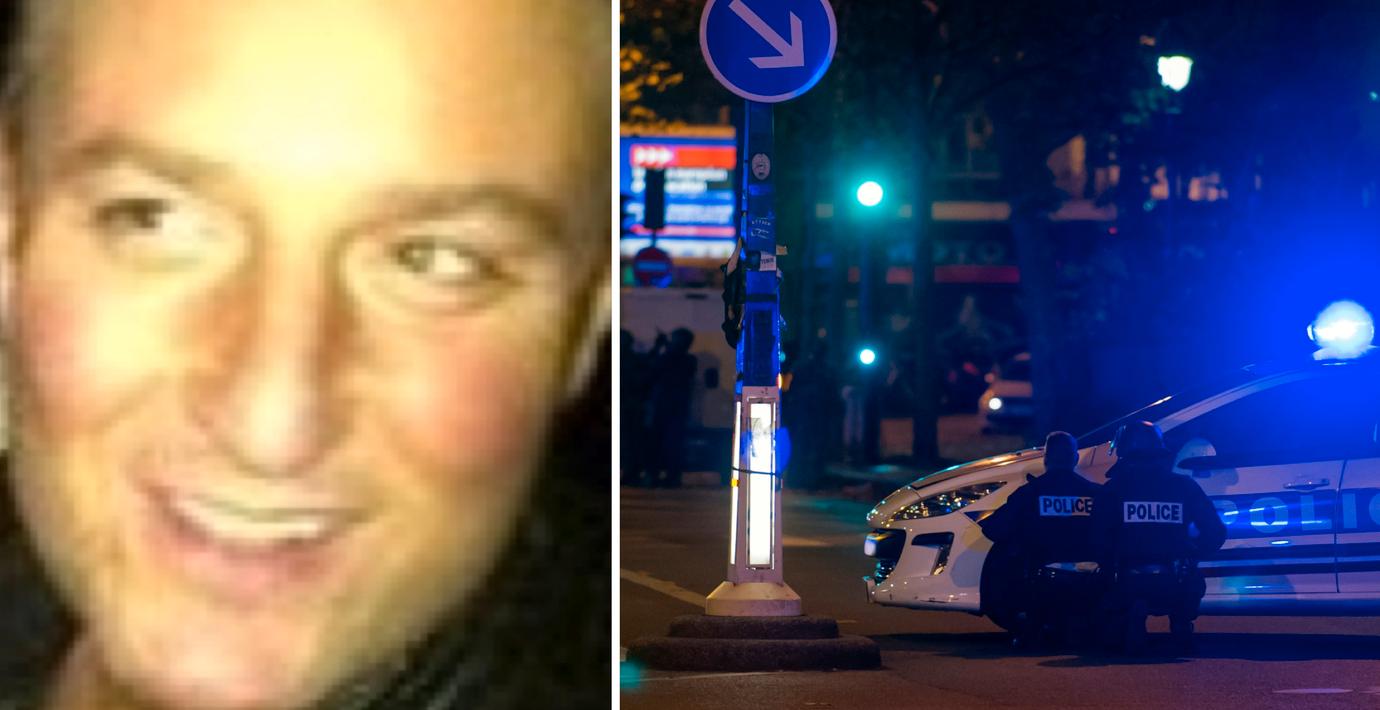
Överlevde Bataclan – och Heyselstadion
Massimiliano Natalucci, 45, överlevde IS attack på konserthuset Le Batacalan. Italienaren klarade sig undan med endast en skråma på benet. Hans vän skadades av ett skott i axeln. Det här är andra gången Natalucci överlever en stor katastrof. För 30 år sedan besökte han Heyselstadion i Bryssel för att se Europacupfinalen mellan Juventus och Liverpool när en läktarsektion kollapsade efter supporterbråk. Även då klarade han sig oskadd.
Hans syster Federica Natalucci anser sig veta hur brodern lyckats överleva två katastrofer: påven Johannes Paulus II kysste brodern på nacken 1978.
bakgrund
Katastrofen på Heyselstadion
Wikipedia (en)
The Heysel Stadium disaster (pronounced: [ˈɦɛizəl]; Dutch: Heizeldrama; French: Drame du Heysel) occurred on 29 May 1985 when escaping fans were pressed against a collapsing wall in the Heysel Stadium in Brussels, Belgium, before the start of the 1985 European Cup Final between Juventus of Italy and Liverpool of England. 39 people—mostly Italians and Juventus fans—were killed and 600 were injured in the confrontation.
Approximately 1 hour before the Juventus-Liverpool final was due to kick off, a large group of Liverpool fans breached a fence separating them from a "neutral area" which contained mostly Juventus fans. The latter ran back on the terraces and away from the threat into a concrete retaining wall. Fans already standing near the wall were crushed; eventually the wall collapsed. Many people climbed over to safety, but many others died or were badly injured. The game was played despite the disaster in order to prevent further violence, with Juventus winning 1–0.
The tragedy resulted in all English football clubs being placed under an indefinite ban by UEFA from all European competitions (lifted in 1990–91), with Liverpool being excluded for an additional 3 years, later reduced to 1, and fourteen Liverpool fans found guilty of manslaughter and each sentenced to three years' imprisonment. The disaster was later described as "the darkest hour in the history of the UEFA competitions".
bakgrund
Påve Johannes Paulus II
Wikipedia (en)
Pope John Paul II (Latin: Ioannes Paulus II; Italian: Giovanni Paolo II; Polish: Jan Paweł II), born Karol Józef Wojtyła (Polish: [ˈkarɔl ˈjuzɛf vɔjˈtɨwa]; 18 May 1920 – 2 April 2005), served as Pope from 1978 to 2005. He was elected by the second Papal conclave of 1978, which was called after Pope John Paul I, who was elected in August after the death of Pope Paul VI, died after thirty-three days. Then-Cardinal Wojtyła was elected on the third day of the conclave and adopted his predecessor's name in tribute to him. In the years since his death, John Paul II has been declared a saint by the Roman Catholic Church. He is referred to by Roman Catholics as Pope Saint John Paul II or Saint John Paul the Great, for example as a name for institutions.
John Paul II is recognised as helping to end Communist rule in his native Poland and eventually all of Europe. John Paul II significantly improved the Catholic Church's relations with Judaism, Islam, the Eastern Orthodox Church, and the Anglican Communion. He upheld the Church's teachings on such matters as artificial contraception and the ordination of women, but also supported the Church's Second Vatican Council and its reforms.
He was one of the most travelled world leaders in history, visiting 129 countries during his pontificate. As part of his special emphasis on the universal call to holiness, he beatified 1,340 people and canonised 483 saints, more than the combined tally of his predecessors during the preceding five centuries. By the time of his death, he had named most of the College of Cardinals, consecrated or co-consecrated a large number of the world's bishops, and ordained many priests. A key goal of his papacy was to transform and reposition the Catholic Church. His wish was "to place his Church at the heart of a new religious alliance that would bring together Jews, Muslims and Christians in a great religious armada".
He was the second longest-serving pope in modern history after Pope Pius IX, who served for nearly 32 years from 1846 to 1878. Born in Poland, John Paul II was the first non-Italian pope since the Dutch Pope Adrian VI, who served from 1522 to 1523. John Paul II's cause for canonisation commenced in 2005 one month after his death with the traditional five-year waiting period waived. On 19 December 2009, John Paul II was proclaimed Venerable by his successor Pope Benedict XVI and was beatified on 1 May 2011 (Divine Mercy Sunday) after the Congregation for the Causes of Saints attributed one miracle to his intercession, the healing of a French nun from Parkinson's disease. A second miracle attributed to John Paul II's intercession was approved on 2 July 2013, and confirmed by Pope Francis two days later (two miracles must be attributed to a person's intercession to be declared a saint). John Paul II was canonised on 27 April 2014 (again Divine Mercy Sunday), together with Pope John XXIII. On 11 September 2014, Pope Francis added John Paul II's optional memorial feast day to the worldwide General Roman Calendar of saints, in response to worldwide requests. It is traditional to celebrate saints' feast days on the anniversary of their deaths, but that of John Paul II (22 October) is celebrated on the anniversary of his papal inauguration.
Omni är politiskt obundna och oberoende. Vi strävar efter att ge fler perspektiv på nyheterna. Har du frågor eller synpunkter kring vår rapportering? Kontakta redaktionen